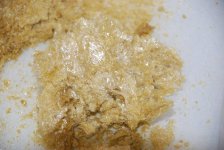gunnaknow
Active member
This is an excellent discussion. Regarding the amount of wax extracted, pressure is a key factor. The solubility of many compounds in CO2 vary with pressure. In the fragrance industry, there are two main types of CO2 extracts. Select Extracts and Total Extracts. Select Extracts (or simply Selects) are extracted at lower pressures and primarily contain the essential oil component. Total Extracts are extracted at higher pressures and contain additional plant waxes, fats, resins and pigments etc.
CO2 Selects:
Selects are oils which are extracted at lower pressures and contain only the volatile, CO2 soluble components. The heavier waxes, resins, and color compounds are left behind. The viscosity of a select oil is generally thick but pourable. These oils closely resemble steam distilled oils in composition, however, they may contain more volatile components that are not extracted during steam distillation.
CO2 Totals:
Totals are oils that are extracted at higher pressures and contain both the volatile and non-volatile CO2 soluble components of a plant. These oils contain the essential oil of the plant plus the heavier waxes, resins, color compounds, making them very similar to the plant itself. CO2 totals are generally thick and pasty but are soluble in essential oils and vegetable oils (although some may need gentle warming).



